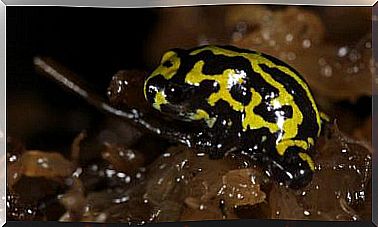Discovering The 6 Largest Jellyfish In The World
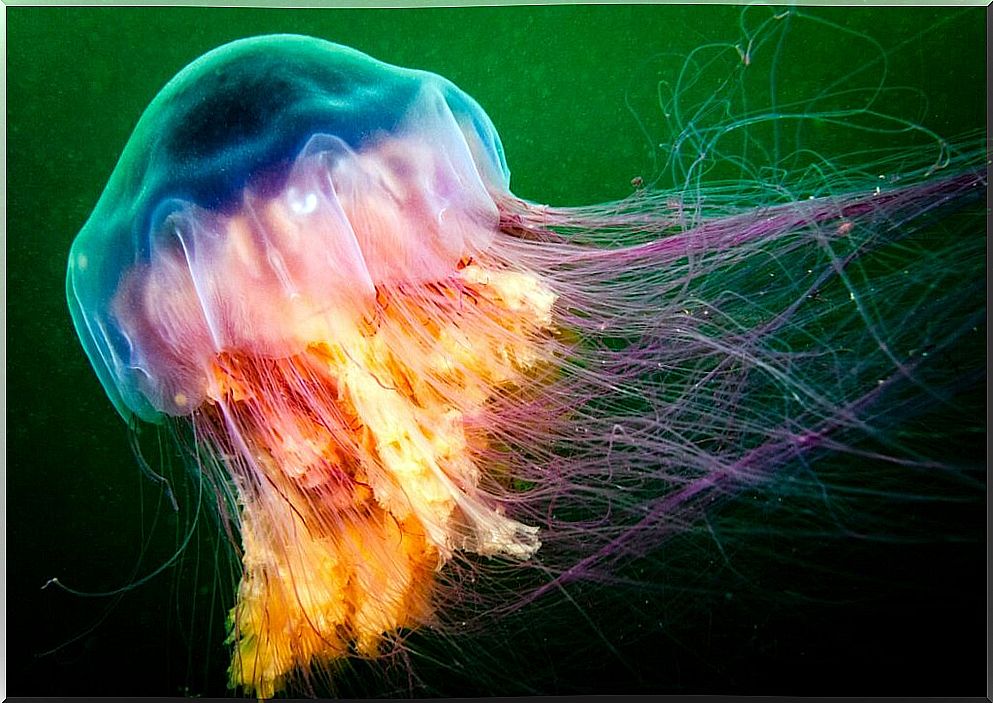
Jellyfish are organisms made up of over 90% water. Despite being so simple, their size at sea can be immense. Since water supports the weight of organisms, jellyfish can grow enormously, reaching impressive sizes. We see the largest jellyfish in the world.
If you think a palm-sized jellyfish is already a scary monster, read on. We will take you to discover the real gelatinous giants of the sea.
The 6 largest jellyfish in the world
1. Largest jellyfish in the world: Lion’s mane jellyfish ( Cyanea capillata )
Capable of reaching 36 meters in length, this jellyfish is rare in anthropogenic environments. Since its natural habitat is limited to the abyssal depths, this invertebrate does not come into contact with humans. Its coloring can vary between yellow and orange, depending on the individual.
Don’t worry: despite its size, it’s not a species to be feared. Of course, you shouldn’t touch its tentacles, as they could cause severe dermatitis. Its poison is not lethal to humans, but that doesn’t mean an encounter isn’t painful.
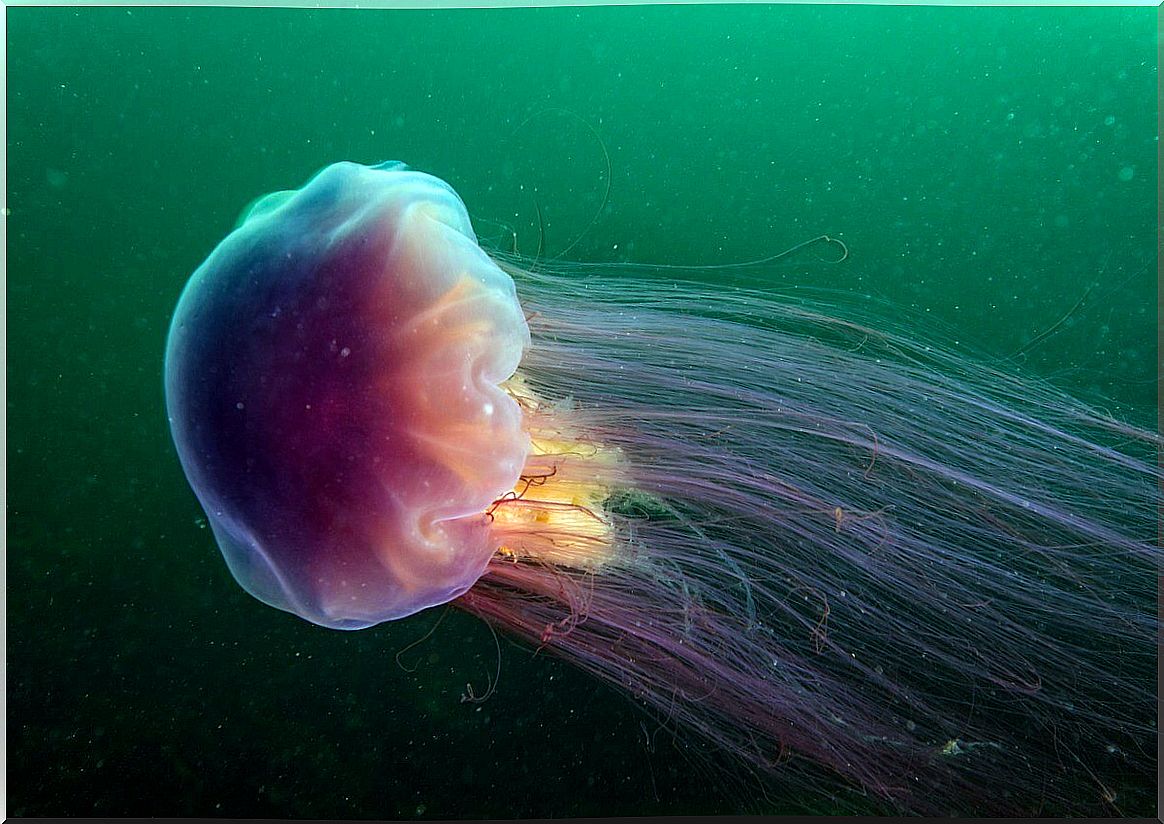
2. Crown jellyfish ( Cephea cephea )
Due to its characteristic shape, this jellyfish has earned the name of crown jellyfish. Reaching 50 to 60 centimeters in diameter, this invertebrate is characterized by widely branched tentacles. The wavy shape of its bell gives it its interesting nickname.

3. Nomura’s Medusa ( Nemopilema nomurai )
Directly from the seas of Japan, this species can reach 2 meters in diameter, weighing up to 200 kilograms. The coloring of this jellyfish is between red and pink. It belongs to a family of jellyfish which are characterized by having root-shaped tentacles.
4. Largest Jellyfish in the World: The Stygiomedusa Gigantea
This invertebrate lives mainly in the depths of the sea. Specimens have been found up to 1700 meters deep. However, it occasionally also rises near the surface. It is believed that its coloring is transparent because its habitat is devoid of light, which is why it is also called “ghost jellyfish”.
5. Drymonema larsoni
This species is known to be an active predator of Aurelia aurita, the common jellyfish. It can reach nearly one meter in diameter and 25 kilograms in weight, making it a good candidate among the largest jellyfish species in the world.

6. Sea Pomone ( Rhizostoma pulmo )
Here is a jellyfish almost the size of a person. It may be hard to believe, but this species is one of the most abundant along the shores of the Mediterranean. It reaches a diameter between 50 and 60 centimeters, although when at birth it measures only a few millimeters.
Its 8 harmless tentacles seem harmless, but are actually very stinging. Its translucent color can vary slightly between green, black, brown and blue.
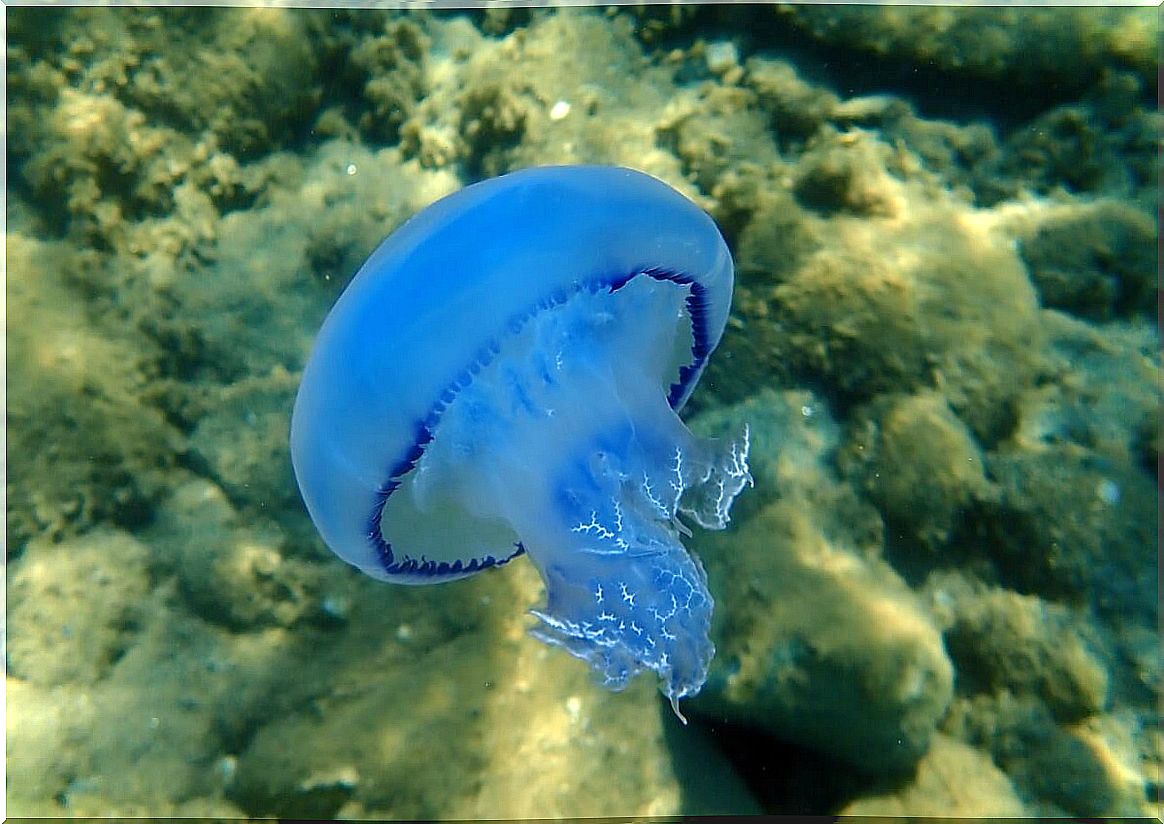
Endangered species vs pest species
In general, jellyfish are not currently in danger of extinction. However, the lack of classification among endangered species may simply be due to the lack of information and research from the scientific community.
This group may be one of the most diverse in existence, as its representatives have lived on Earth for 500 million years, according to studies. Despite this, due to the difficulty of researching at sea, we may still not be aware of many species.
According to the information currently available, this type of invertebrate presents 2 main risks: climate change and an increase in its population.
Due to changes in sea temperature, upheavals in the thermal gradients of currents can cause species to displace even far from their usual habitat. This leads them to colonize new habitats and become pests, as has already been recorded in several surveys.
On the other hand, the sudden increase in the number of jellyfish should be taken into account. In a normal situation, populations are limited by the amount of food, however this is currently changing. Due to the contamination of the seas, plankton surfacing events occur, which serves as food for jellyfish.
While this doesn’t sound bad in itself, it should be noted that any unnatural action has the potential to present a reaction of the same intensity, but in the opposite direction. Overgrowth of jellyfish could compromise the integrity of many species.
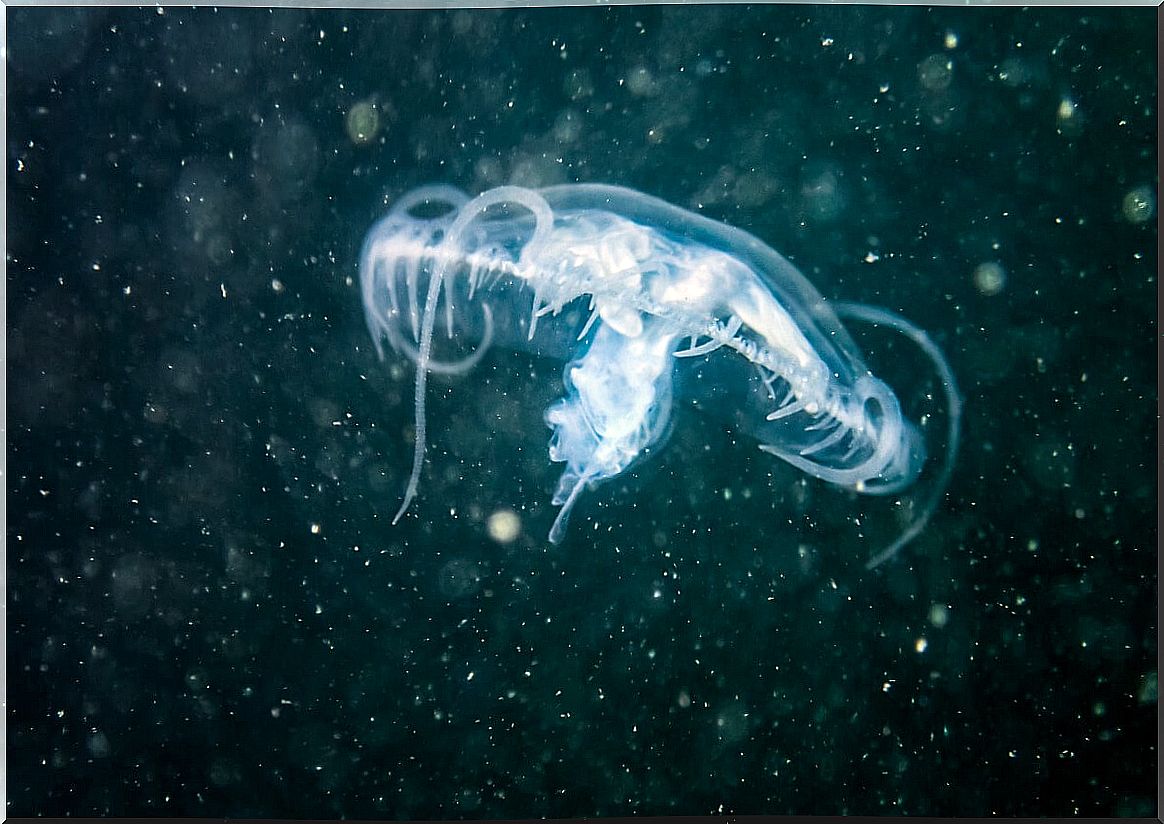
Despite the incredible size of the world’s largest jellyfish species, the majority are much smaller in size, especially in the case of species that live near the coast.





